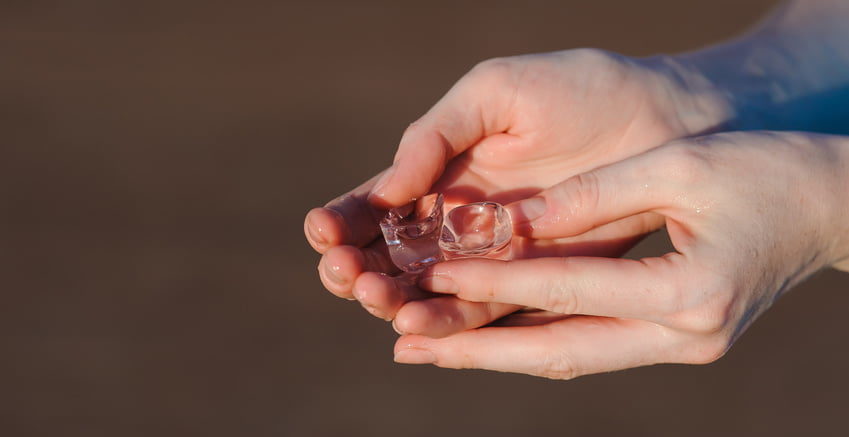One of my favorite pre-parenting stories is from a birthing course that my husband and I took before the birth of our first daughter. Like many first-time parents, we had signed up to be “better prepared” for what was to come.During this particular course we took, there was an exercise to simulate how to focus during labor. Each of us had to hold an ice cube in our hand for a certain amount of time without dropping it. If the feeling got intense, we were to breathe through the sensations and see how we fared.
Somehow I had tuned out during the instructions about the purpose of the exercise. Almost immediately after the ice cube was placed in my hand, I reacted by dropping the ice cube on the ground and said “Ow! That hurts!”
Clearly, I was not a fan of holding the ice cube.
My husband looked astonished. If that was foreshadowing how labor was going to go, we were in trouble. Luckily though we survived labor, and to this day, my husband and I still joke about the Ice Cube Episode as one of the most memorable starts to parenting.
As we deliberately try to practice mindfulness now, I got another shot at the Ice Cube Episode last week and this time around with my two girls. Susan Greenland also refers to this exercise as “Melting Ice” in her book Mindful Games.
Like our birthing course had suggested, in this activity, you hold an ice cube in the palm of your hands. As the feeling intensifies you try not to react to the sensations reflexively but rather notice the sensations and your feelings as they arise. This was such a fascinating and fun activity to try with both girls.
My 2-year old lasted about as long as I did during my first Ice Cube Episode. Her instinct was to react right away and drop the ice cube. I’m glad to know that my performance during the birthing course was like that of a 2-year old’s.
My 6-year old, however, was focused and determined to hold the ice until it completely melted. And if she was in, I was in.
After a few seconds of holding the ice, as the sensations began to intensify, my daughter automatically started taking slow, deep breaths. I followed her lead, and then we started talking about how it felt in our palms. We both said it was hurting, but that we were okay. I reminded my daughter that holding the ice, while it could feel very cold, was still safe and not actually going to hurt us. She nodded in agreement.
I then noticed my daughter take her arm out, palm up, spinning her arm in circles. She then starting twirling her entire body in circles and even started doing some ballet moves. I asked her what she was doing, and she said that she thought doing the different movements helped ease her pain. So again I followed her lead. As we both moved around the kitchen, holding our ice in hand, we were full of silly giggles.
Unsolicited, my 6-year old then started doing a Dragon Fire Breath on her palm. It’s a creative breath I taught the girls, where we blow out fire like a dragon. She mentioned that the breath felt very warm, unlike other times we do the breath.
As we talked about how we were feeling, we realized that the ice cube wasn’t hurting as much. In fact, the very intense feeling had almost subsided to nothing after a certain point. The remainder of the time holding the ice was totally manageable. We chatted with occasional giggles and strange movements until the ice completely melted. And as soon as it did, my 6-year old wanted to do the game again, and this time include her grandparents who we were with.
Interestingly, in her book, Mindful Games, Greenland includes this “Melting Ice” exercise in the chapter on Caring, specifically around noticing “automatic, knee-jerk reactions to pleasant, unpleasant and neutral experiences.” Being able to gently pause, notice and respond rather than react is at the heart of mindfulness, at the heart of compassion.
I was impressed with how my 6-year old handled her first Ice Cube Episode. Unknowingly, she relied on tools of breath work and movement to help her through the intensity. Some of the tools are ones we actively practice together, and some she instinctually came up with on her own. My hope is that she and my younger daughter know how to rely on these tools in their lives — not just holding an ice cube in hand — but when they encounter intense emotions or situations in life.




Share this: